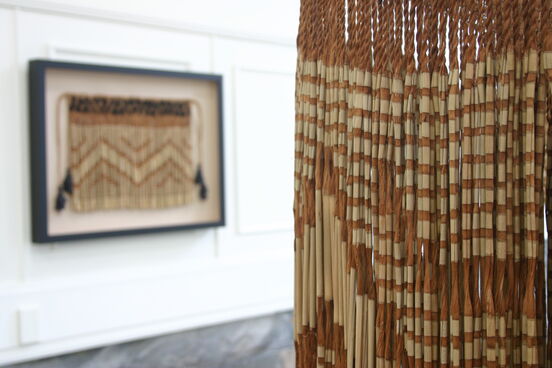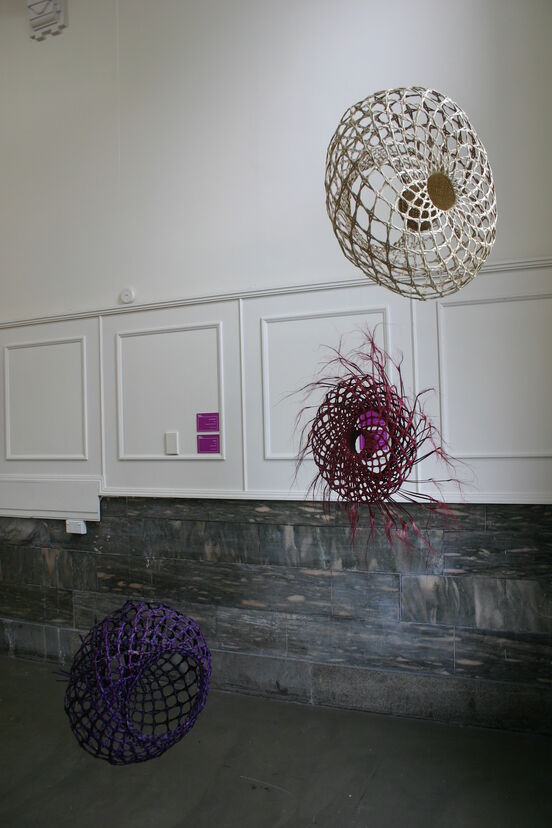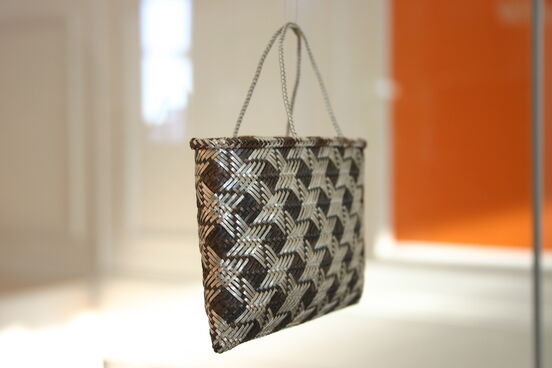New Threads showcases a selection of male New Zealand weavers and aims to dispel long held misunderstandings about the role men have played in the history of weaving. Although the makers in New Threads reference techniques and materials from the raranga traditions of Maori, not all the makers are Maori. Irrespective of their background their works demonstrate a contemporary and dynamic balance between the conventions of the indigenous peoples of New Zealand and ideas and materials from further afield.
One of the known origins of weaving is Sumeria where, in the Fifth century BC, enslaved women were forced into work camps to produce cloth for the aristocracy. Weaving traditions associated with indigenous cultures have been shaped largely by social and spiritual frameworks which have been altered and changed over time by imperial and colonial expansion. Many making traditions involved both men and women. This is an aspect of practice which often changed with the advent of colonisation. In Nigeria, men of the Nupe tribes have been renowned for centuries for the quality of their woven goods which were often reserved for use by royalty. The Zapotec of South America changed their traditional roles to accommodate the Spanish, for whom weaving was a male-dominated tradition. In these traditions, and others, women were replaced by men in all of the essential aspects of the weaving process.
Classical Maori culture was not alone in embracing both female and male roles for makers. Although Captain James Cook observed that weaving was undertaken predominantly by women, it is accepted that men were often a part of weaving traditions in some hapu. The poi, now recognised as an integral element of traditional woven art forms, was developed by men to sharpen wrist movements for use with weapons in warfare. And it is only recently that the poi has become associated principally with women as part of Maori performance.
Today there is no question that the majority of domestic weaving practice both in New Zealand and throughout the world has been the domain of women for a long time. The reasons for this are complex and are mainly related to local cultural and economic frameworks. In turn these frameworks have shaped our expectations of weaving practice and practitioners, including the issue of gender roles. New Threads aims to raise the profile of male weaving practice in Aotearoa and examine some of the misconceptions that have developed around the significance of gender as it relates to weaving. As history demonstrates there are no hard or fast rules.
Makers:
Lane Hawkins, Nigel How, Matthew McIntyre Wilson, Peter Morgan, Te Ao Marama Ngarimu, David Pont, Karl Rangikawhiti Leonard
New Threads: Contemporary Male Weaving was curated by Karl Chitham and Mark Sykes for the Whakatane District Museum and Gallery.

Karl Rangikawhiti Leonard, Rapaki/Piupiu (details), c.2009. Courtesy of the artist.

David Pont, Bowl Form, Whetu, Kina (L-R), c.2008. Courtesy of the artist.

Matthew McIntyre Wilson, Kete, c.2006. Courtesy Shona Taylor.